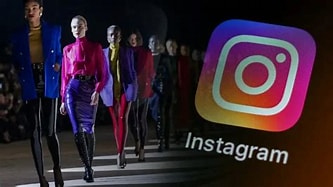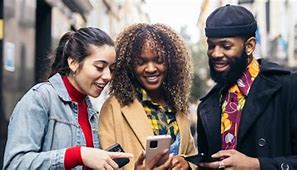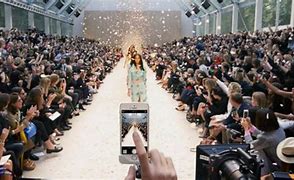The Impact of Social Media on Fashion Trends
Introduction
In today’s digital age, social media has become a powerful force shaping every aspect of our lives, and fashion is no exception. Gone are the days when trends were dictated solely by high-end designers and fashion magazines. Now, platforms like Instagram and TikTok are at the forefront, influencing styles and consumer behavior in ways we never imagined. Have you ever wondered how a simple hashtag or viral video can turn a casual outfit into a global trend overnight? In this article, we’ll explore the profound impact of social media on fashion trends, examining how these platforms have democratized style and transformed the industry.
The Rise of Social Media in Fashion
A New Era of Trendsetting
Social media has revolutionized the way we discover and engage with fashion. No longer confined to runways and glossy magazines, trends now emerge from user-generated content shared across various platforms. This shift has democratized fashion, allowing anyone with an internet connection to participate in the conversation.

Platforms Leading the Charge
- Instagram: With its visually-driven format, Instagram has become a hub for fashion inspiration. Influencers and brands showcase their latest looks, creating a constant stream of outfit ideas.
- TikTok: Known for its short-form video content, TikTok has taken the fashion world by storm. Viral challenges and trends can propel specific styles into the spotlight almost overnight.
- Pinterest: Often used for mood boards and inspiration, Pinterest allows users to curate collections of their favorite styles, making it easier to track emerging trends.
How Social Media Influences Consumer Behavior
Instant Access to Trends
One of the most significant impacts of social media is the instant access it provides to the latest trends. Users can scroll through their feeds and see what influencers are wearing in real-time. This immediacy creates a sense of urgency—if you don’t jump on a trend quickly, you might miss out.
The Power of Influencers
Influencers play a crucial role in shaping fashion trends. With their large followings and relatable content, they can sway consumer opinions and drive sales. Research shows that 9 out of 10 people use social media to learn about fashion brands, highlighting the importance of influencer marketing.
Authenticity Matters
Unlike traditional advertising, which can feel impersonal, influencers often present themselves as relatable figures. Their followers trust their recommendations because they perceive them as genuine endorsements rather than paid promotions.
The Role of User-Generated Content
Social media encourages users to share their own fashion choices through hashtags like #OOTD (Outfit of the Day) or #FashionInspo. This user-generated content fosters community engagement and allows individuals to express their unique styles while influencing others.

The Impact on Fashion Marketing Strategies
Shifting from Traditional Advertising
Before social media took center stage, fashion marketing relied heavily on print ads and television commercials. Today, brands must adapt to a digital-first approach that prioritizes social engagement over traditional methods.
Engaging with Consumers Directly
Social media allows brands to interact with consumers in real-time. They can respond to comments, share user-generated content, and create polls or quizzes to engage their audience actively. This level of interaction builds brand loyalty and fosters a sense of community among followers.
E-commerce Integration
Platforms like Instagram have integrated shopping features that allow users to purchase items directly from posts. This seamless shopping experience blurs the lines between browsing and buying, making it easier for consumers to act on their impulses.
The Acceleration of Fashion Trends
The Viral Nature of Trends
With the rise of social media, the lifecycle of fashion trends has dramatically accelerated. A look or item can go viral within hours due to hashtags or challenges circulating on platforms like TikTok.
Case Study: The “Cottagecore” Aesthetic
The “cottagecore” aesthetic gained popularity through TikTok as users shared videos showcasing idyllic rural life—think flowy dresses, vintage accessories, and homemade baked goods. This trend quickly influenced fashion retailers who began producing similar styles to meet consumer demand.
The Influence of Hashtags
Hashtags serve as powerful tools for trend discovery. By clicking on or searching for specific hashtags, users can easily find related content that inspires them or introduces them to new styles.
The Democratization of Fashion
Breaking Down Barriers
Social media has broken down barriers that once separated high fashion from everyday consumers. Anyone can become a trendsetter by sharing their unique style online.
The Rise of Micro-Influencers
Micro-influencers—individuals with smaller but highly engaged followings—have gained prominence in recent years. Brands recognize that these influencers often have more authentic connections with their audiences compared to larger celebrities.
Celebrating Diversity in Fashion
Social media platforms have also played a role in promoting diversity within the fashion industry. Users from various backgrounds showcase their styles, challenging traditional beauty standards and encouraging brands to embrace inclusivity.
Sustainability and Ethical Fashion Trends
The Demand for Transparency
As consumers become more conscious about sustainability, social media amplifies calls for transparency in fashion production practices. Movements like #WhoMadeMyClothes encourage brands to disclose information about their manufacturing processes.
Eco-Conscious Influencers
Many influencers advocate for sustainable fashion by promoting thrifted outfits or eco-friendly brands. Their reach helps raise awareness about environmental issues within the industry.
Viral Movements for Change
Social media has been instrumental in driving movements that demand ethical practices from brands. For example, campaigns against fast fashion have gained traction through viral hashtags and shared content highlighting its negative impacts on the environment.

Challenges Faced by Brands in the Social Media Landscape
Keeping Up with Trends
With trends changing at lightning speed, brands face pressure to stay relevant in an ever-evolving landscape. This requires agility in design and marketing strategies to respond quickly to consumer demands.
Navigating Negative Feedback
While social media allows for direct engagement with consumers, it also opens the door for criticism. Brands must be prepared to handle negative feedback publicly and address concerns transparently.
The Future of Fashion in a Social Media World
Embracing Technology and Innovation
As technology continues to evolve, so will its integration into fashion marketing strategies. Brands will need to leverage AI-driven analytics to predict trends based on social media activity effectively.

Virtual Reality Shopping Experiences
Imagine trying on clothes virtually before making a purchase! As augmented reality (AR) technology advances, we may soon see more brands offering virtual fitting rooms on social platforms.
Building Lasting Relationships with Consumers
The future will likely focus on building long-term relationships rather than one-time transactions. Brands that prioritize community engagement will thrive as consumers seek authentic connections with those they support.
Conclusion
The impact of social media on fashion trends is undeniable; it has reshaped how we discover styles, engage with brands, and express ourselves through clothing. From influencers dictating what’s “in” to everyday users sharing their unique looks online, social media has democratized fashion like never before. As we move forward into this digital era, it’s crucial for both consumers and brands to adapt to these changes while fostering inclusivity, sustainability, and authenticity within the industry.
So next time you scroll through your Instagram feed or watch a TikTok video showcasing a new trend, remember: you’re not just witnessing style evolution; you’re part of it!
Meta Description
Explore how social media platforms like Instagram and TikTok influence fashion trends by democratizing style discovery and transforming consumer behavior.
FAQs
1. How has social media changed the way we discover fashion trends?
Social media provides instant access to global trends through user-generated content shared by influencers and everyday users alike.
2. What role do influencers play in shaping fashion?
Influencers sway consumer opinions through relatable content that feels more authentic than traditional advertising methods.
3. How do hashtags influence trend discovery?
Hashtags help users find related content quickly; clicking on them leads to a wealth of inspiration tied to specific styles or movements.
4. What challenges do brands face in the social media landscape?
Brands must keep up with rapidly changing trends while navigating public feedback—both positive and negative—on their platforms.
5. How is sustainability addressed through social media?
Movements advocating for transparency in production practices gain traction via viral campaigns on social platforms that encourage ethical consumption habits. Feel free to modify any sections or ask for further elaboration on specific points!

